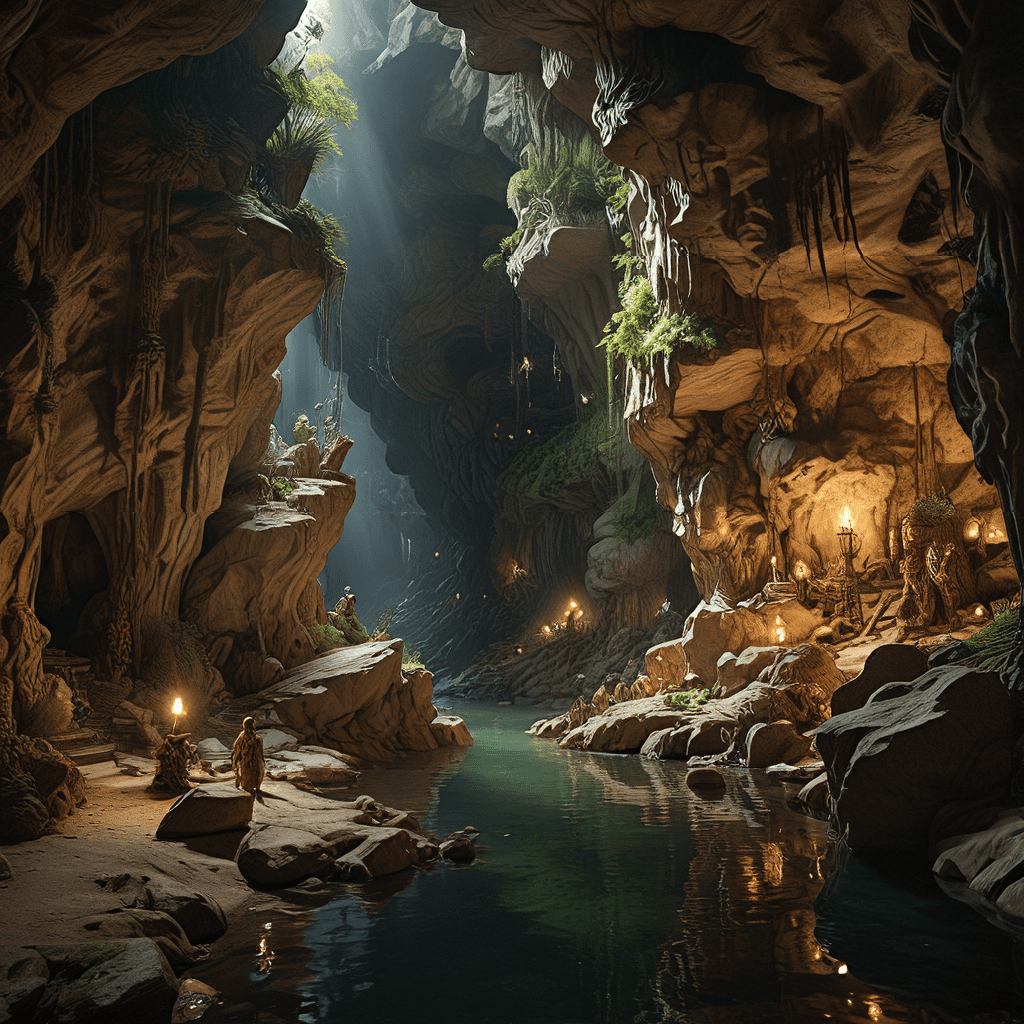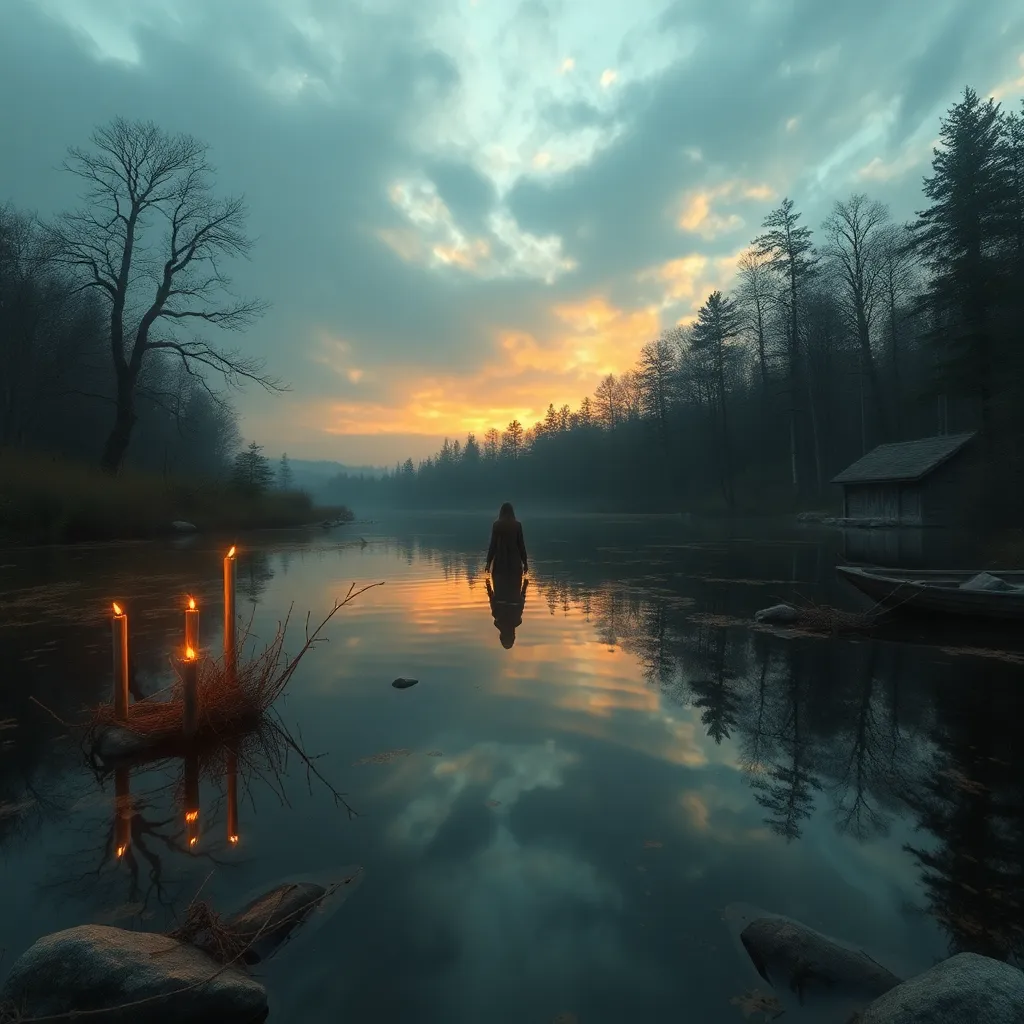Myths of the Baltic Caves: Meet the Creatures of the Deep
The Baltic region, with its dramatic coastline and rugged landscape, holds a rich tapestry of myths and legends. Among these tales, the caves and grottos hold a special place, serving as portals to the otherworld and the realm of mythical creatures. From the depths of the earth, these stories whisper of ancient beings, hidden powers, and the mysteries of life and death.
The Cave as a Gateway: Mythic Portals to the Otherworld
In Baltic mythology, caves are often seen as gateways to the underworld, a realm of spirits, ancestors, and hidden knowledge. These entrances to the unseen world can be found in the depths of forests, beneath the roots of ancient trees, or hidden along the shores of the sea. For those who dare to venture into these dark and mysterious places, the caves offer a chance to connect with the spirits of the earth and the forces of nature.
The entrance to the underworld is often guarded by mystical creatures, such as the Laumė, a spirit of nature who protects the forest and its inhabitants. She is often depicted as a beautiful and wise woman who can grant wishes or bestow curses upon those who cross her path. Other guardians of the caves include the Velnias, a demonic figure that represents chaos and evil, and the Ašvieniai, divine horsemen who protect the world from darkness.
Guardians of the Deep: The Mythical Dwellers of Caves and Grottos
Within the misty depths of Baltic caves, a diverse cast of mythical creatures reside. These beings, sometimes benevolent, sometimes malevolent, are integral to the folklore of the region. Among the most notable are the Uodega, a serpentine water spirit that guards the rivers and streams, and the Vandenis, a creature who lives in the depths of the sea and has the power to control the tides.
Caves also provide shelter for more familiar creatures, such as the Ragana, a witch who uses her knowledge of herbs and potions to heal or harm. She often resides in secluded forests, where she brews her magical concoctions and performs rituals. And then there are the Perkūnas, thunder gods who are said to dwell in the caves and control the storms.
The Water Spirit’s Domain: The Role of Water in Baltic Cave Mythology
Water is a powerful element in Baltic mythology, and its presence in caves is deeply significant. Caves often form around underground springs or rivers, and the water that flows through them is believed to have mystical properties. It can be a source of life, healing, or destruction, depending on the intentions of the spirits who control it.
In some myths, the water in caves is said to be inhabited by undines, water spirits who can shape-shift into human form. They are known for their beauty and their love of music, but they can also be dangerous to those who disrespect them. The water in caves is also a place where humans can encounter the Dzīvība, the spirit of life, and the Nāve, the spirit of death.
The Cave as a Place of Transformation: Mythical Encounters and Rites of Passage
The caves in Baltic mythology are not just places of dwelling; they are also sites of transformation and initiation. For those who seek enlightenment, the cave can be a place of testing and growth, where they can confront their fears and emerge stronger. The darkness of the cave symbolizes the unknown, the challenges of life, and the need to find one's inner strength.
The cave's darkness and the creatures that reside there can also represent the unconscious mind. In folklore, individuals often enter caves to seek guidance from spirits, to have visions, or to undergo ritualistic practices. The act of entering a cave and encountering the beings within is symbolic of a journey of self-discovery and a quest for meaning.
The Serpent’s Lair: Dragons and Other Reptilian Beings in Baltic Mythology
The serpent, a creature associated with power, wisdom, and danger, plays a prominent role in Baltic mythology. In many tales, serpents are guardians of sacred places, including caves, guarding treasures and ancient secrets. These serpentine creatures are often linked to water, representing the flow of energy and the mysteries of the deep.
The Žaltys, a giant serpent, is a mythical creature found in Lithuanian folklore. This serpent, often depicted as having a dragon-like form, represents the power of nature and the forces of the earth. The Žaltys is believed to inhabit deep caves, guarding hidden treasures and knowledge. In some stories, the Žaltys is depicted as a wise and benevolent creature, offering guidance and protection to those who respect it. However, others portray the Žaltys as a fearsome and destructive force, bringing chaos and destruction to those who disrespect its domain.
Other reptilian creatures found in Baltic mythology include the Ežys, or the hedgehog. The hedgehog, often associated with the earth, is a symbol of protection and resilience. In some stories, the hedgehog is depicted as a guardian spirit, protecting homes and families from evil spirits.
The Dark and the Light: Dualistic Nature of the Cave and its Creatures
The cave, as a space of transition and transformation, embodies the dualistic nature of life. It is a place of both darkness and light, of mystery and revelation. The creatures that inhabit these caves also reflect this duality, embodying both benevolent and malevolent forces.
The Laumė, for instance, is a guardian spirit who protects the forest and its inhabitants, but she can also be a fierce protector of her domain, punishing those who disrespect her. Similarly, the Velnias, often depicted as a demonic figure, represents chaos and evil, but he can also be a trickster figure, playing pranks and offering temptations to those who are easily swayed.
The darkness of the cave represents the unknown, the challenges of life, and the need to find one's inner strength. The presence of light within the cave is also symbolic. It signifies hope, enlightenment, and the possibility of finding meaning in one's journey. The creatures within the cave, whether benevolent or malevolent, represent the different faces of life.
The Echoes of the Past: The Influence of Pre-Christian Beliefs on Cave Mythology
The Baltic region has a rich history of pre-Christian beliefs, which have significantly influenced the mythology of the region. The worship of nature spirits, the veneration of ancestors, and the belief in the interconnectedness of all things are all reflected in the myths and legends that surround the caves.
The pre-Christian Baltic people saw the caves as sacred places, connected to the spirits of the earth and the forces of nature. They believed that these caves were portals to the underworld, where spirits resided and where the dead were buried. These beliefs have persisted in the folklore of the region, shaping the stories and imagery that surround the caves.
The creatures that inhabit the caves, such as the Velnias, the Laumė, and the Žaltys, reflect the belief in the power of nature and the presence of spirits in the world. These creatures, often associated with specific elements or locations, are manifestations of the ancient beliefs that have been passed down through generations.
Cave Creatures as Symbols: Interpretations and Meanings in Baltic Folklore
The creatures of Baltic cave mythology hold symbolic meanings, reflecting the values and beliefs of the people who created them. These creatures are more than just fantastical beings; they are representations of the forces that shape the world and the human experience.
The Laumė, for example, represents the protective power of nature and the importance of respecting the balance of the natural world. The Velnias, on the other hand, represents the temptations of the world and the dangers of straying from the path of righteousness. The Žaltys embodies the power and wisdom of the earth and the need to approach the natural world with caution and respect.
By understanding the symbolic meanings of these creatures, we can gain a deeper appreciation for the rich and complex tapestry of Baltic mythology. These stories, passed down through generations, offer insights into the human condition, the relationship between humans and nature, and the enduring power of the imagination.
The Enduring Legacy: The Impact of Cave Mythology on Modern Culture and Identity
The myths and legends of Baltic caves continue to resonate in the culture and identity of the region. These stories are woven into the fabric of local folklore, art, and literature, reflecting the enduring power of these tales.
The creatures of Baltic cave mythology are often depicted in art, literature, and music, serving as symbols of the region's heritage and its connection to the natural world. These stories, passed down through generations, continue to inspire and entertain, reminding us of the power of the imagination and the enduring legacy of the ancient world.
The caves themselves, with their dramatic landscapes and mysterious depths, continue to draw visitors from around the world, seeking to experience the power and beauty of these ancient places. The myths and legends that surround the caves add an extra layer of mystique and wonder, making them even more captivating and memorable.
FAQ
Q: What are some of the most common creatures found in Baltic cave mythology?
A: Some of the most common creatures include the Laumė (a nature spirit), the Velnias (a demonic figure), the Žaltys (a giant serpent), and the Uodega (a serpentine water spirit).
Q: What is the significance of caves in Baltic mythology?
A: Caves are seen as gateways to the underworld, portals to the realm of spirits, and places of transformation and initiation. They represent the dualistic nature of life, both darkness and light, mystery and revelation.
Q: How has Baltic cave mythology impacted modern culture and identity?
A: These stories are reflected in folklore, art, literature, and music, serving as symbols of the region's heritage and its connection to the natural world. Caves continue to draw visitors who seek to experience the power and beauty of these ancient places.

